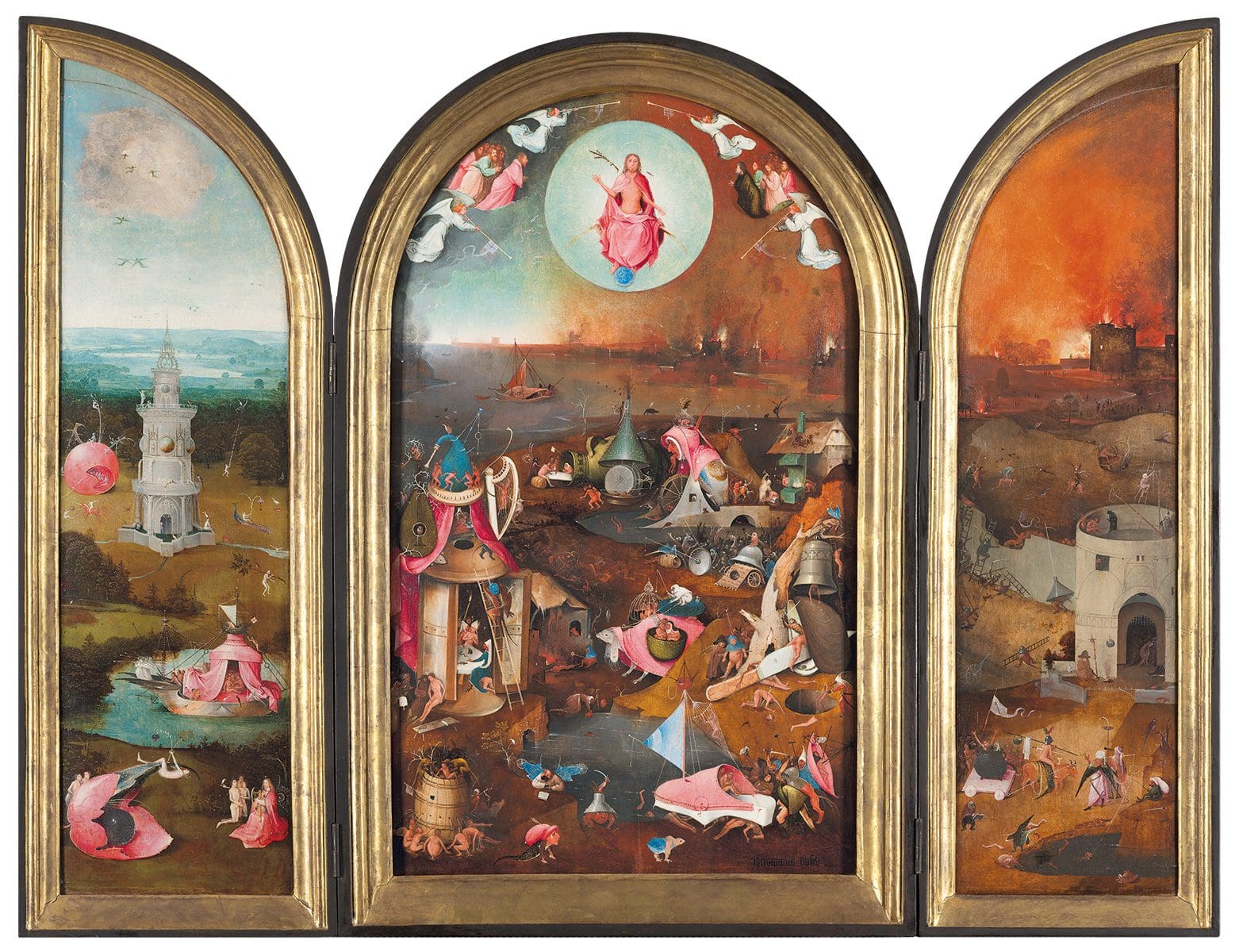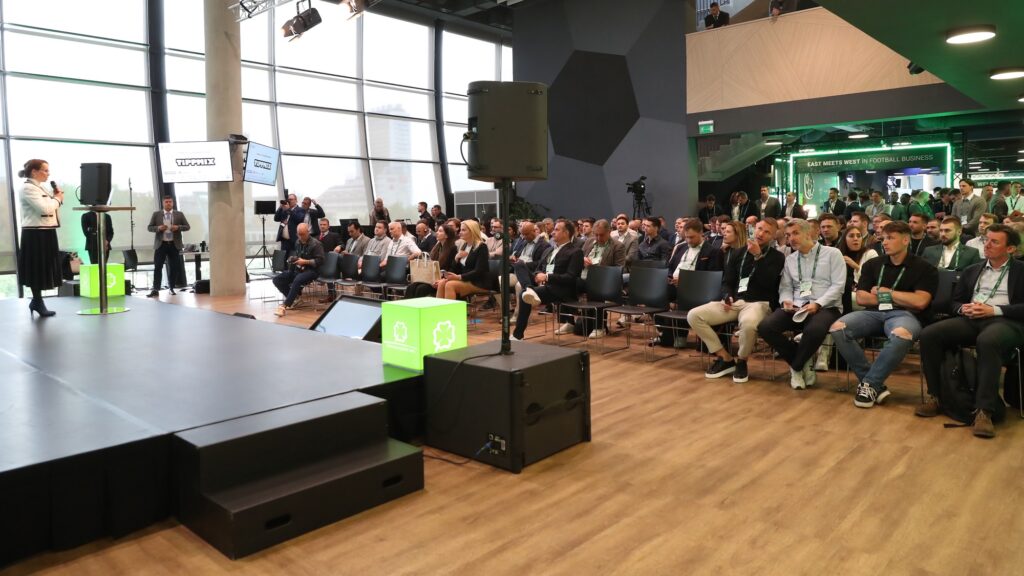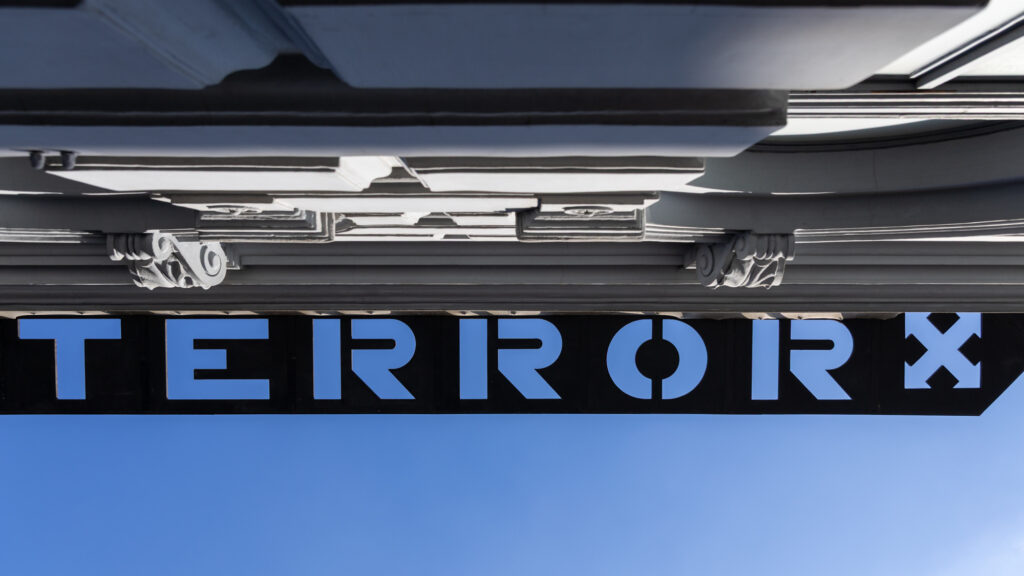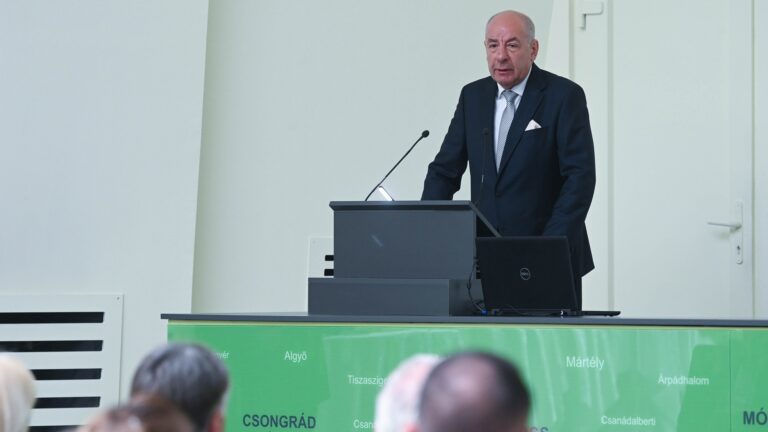A purple storm of fire illuminating the night, with the contours of cities in ruins, lonely sufferers in a grey barren field, monsters and demons assaulting humans… Like a nightmare, or a disaster movie. Like a chronicle of the devastation of wars of the 20th and 21st centuries—in the body and the soul of the suffering people.
All this, in a painting completed five hundred years ago.
And that is only one painting in Hieronymus Bosch’s extraordinary oeuvre, showcased at the unprecedented, world-class exhibition that has just been opened in the Museum of Fine Arts in Budapest, Hungary.
Bosch created a completely unique visual universe, with a complex and nuanced world of philosophy behind it
The Netherlandish master created a completely unique visual universe, with a complex and nuanced world of philosophy behind it. His paintings make a piercing effect on the eye, the heart, and the mind, with characteristic features which make them instantly recognizable even for those who are not very well-versed in the history of art. A Bosch painting is guaranteed to inspire ideas, questions as well as answers, in anyone with or without a breadth of erudition, at the very first glance.
Stunningly, there are no more than twenty-five paintings which are attributed to Bosch without a doubt, with a multitude of similar works having been produced either by his ardent followers or contemporary and subsequent forgers. The actual identity of quite a number of pieces believed to be by Bosch has been the subject of debate for centuries.
Not only Bosch’s work, but also his life is full of mystery. In fact, we hardly know anything about it. We know, for instance, that he was born in or around 1450 as Jheronimus van Aken, lived most of his life in ’s-Hertogenbosch, in the Netherlands, and was buried in August 1516. ’s-Hertogenbosch was a well-developed busy town of commerce at the time, where artists, even entire families of artists, such as the Van Aken family, had a lot of work to do. The town, however, was largely destroyed by fire when Bosch was and adolescent, and the disaster may have been stuck in the artist’s subconscious, and may have appeared in his visionary paintings later.
Bosch’s paintings are visionary indeed, displaying scenes which combine reality and dreams, joy and depression, hope and despair, and offer the expert eye countless nuances to recognize and analyse.

The reception of Bosch’s paintings was different in each historical period. In the baroque era, viewers were enthralled by all the monsters, chimeras, and other products of his imagination. Later, at the time of the great disintegration in art at the beginning of the twentieth century, Bosch was interpreted and appreciated as a representative of heretic notions, or even as an early surrealist.
Over the last few decades, however, more sober interpretations have emerged, proposing that Bosch was a rather honest or even orthodox representative of the religious worldview of the late medieval period.
If one accepts this, one may be content with the interpretation that Bosch’s intensely Biblical paintings, the legendary triptychs, the representations of Eden, of this world, of the Purgatory, and of Hell, are really about what they are directly displaying: tales and parables for the Christian soul, showing the right way to live our lives, celebrating the good life, the simple life, the pious life, while also depicting pain and suffering in hell with a horrifying naturalism, in order to serve as effective warnings for viewers aspiring to a true life—both then and now.
These dense and complex paintings also feature countless additional symbolic riddles
Still, these dense and complex paintings also feature countless additional symbolic riddles, both decipherable and unsolvable, which the greatest experts have been attempting to interpret generation after generation. Art lovers can now have a closer look at Bosch’s masterpieces if they visit the exhibition titled ‘Between Hell and Paradise’ in the Museum of Fine Arts in Budapest. This is the greatest show of Bosch’s art, ever, in Central Europe, and according to the curators, one the most significant Bosch exhibitions worldwide in the last fifty years.

The exhibition, evoking the unique spirituality and visual culture of the last period of the Middle Ages, showcases close to ninety works of art, including ten paintings by Bosch himself, that is, almost half of his oeuvre: the Last Judgment triptych of Brugge, the Ship of Fools (Paris, Musée du Louvre), the Adoration of the Magi (New York, The Metropolitan Museum of Art), Saint John the Evangelist on Patmos (Berlin, Gemäldegalerie) and Ecce Homo (Frankfurt, Städel Museum).
As reported by the museum, further loans for the large-scale Budapest exhibition have come from some fifty public and private collections are, among others, from The Metropolitan Museum of Art of New York, the Musée du Louvre of Paris, The Morgan Library & Museum in New York, the Museum Boijmans Van Beuningen in Rotterdam, the Rijksmuseum in Amsterdam, The National Gallery in London, the J. Paul Getty Museum in Los Angeles, and the Museo Nacional del Prado in Madrid.
The exhibition explores eternal human themes rendered by Bosch in an utterly original and enigmatic visual language: the choice between virtue and vice, the questions of faith and truth, the experiencing of unfettered desires and mastering them, as well as the spiritual quality of human existence.
In addition to autograph paintings and drawings, visitors can see works that represent the antecedents for the master’s oeuvre, as well as the most characteristic masterpieces from his studio and by his followers.
Hieronymus Bosch was one of the greatest and most enigmatic figures in the history of European painting, who produced his pictures in the last years of the medieval period, with the Renaissance already on the horizon, just before the great religious, political, and social upheavals of the 16th century.
Being able to see almost half of his works in one place is a special twenty-first-century miracle—in Budapest.








